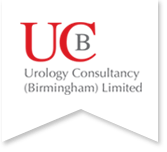Green Light Laser Surgery
Green light laser prostatectomy is a safe, effective and efficient treatment to ease the urinary symptoms in patients with benign prostatic hyperplasia (BPH), enlargement of the prostate gland. It is a minimally invasive procedure which utilizes a 532nm wavelength laser to remove excess prostate tissue blocking the urethra by vaporization. This laser appears green in colour so this surgery is also called green light laser therapy. The laser with this specific wavelength is chosen as it is selectively absorbed by the red prostate tissue and poorly absorbed by water. The procedure is also known as Photo selective Vaporisation of the Prostate (PVP).
Indication
Green light laser prostatectomy is indicated in these patients to remove the excess prostate tissue blocking the urethra to ease the urinary symptoms.
Procedure
Green Light Laser prostatectomy is performed under general or spinal anaesthesia. Laser is delivered through a flexible fibre passed through a cystoscope, a tube like instrument with a light and a camera at one of its ends. The cystoscope along with the flexible fibre is inserted through the urethral opening of the penis. The real time images from the cystoscope are displayed on the monitor in the operating room. The surgeon controls the direction and delivery of the laser energy through the flexible fibre tube, under the guidance of real time imaging. Laser energy is delivered as small bursts, lasting for a few seconds, to vaporise the prostate tissue. Continuous flow of irrigation fluid is maintained to remove the cut prostate tissue, keep the fibre tip cool and to maintain a clear view of the operative area. The cystoscope with the fibre is slowly manipulated through the urethra, removing the obstructing prostate tissue thereby enlarging the space within the urethra and restoring normal urine flow. At the end of the procedure a catheter is placed in the bladder and is usually removed the next day after surgery.
Patients are usually discharged on the same day of the procedure but may be kept overnight and discharged the next day.
Risks and complications
All surgical procedures are associated with some risk. Although Green light laser prostatectomy is a relatively safe procedure, complications can occur.
Some of the less serious complications include haematuria (blood in urine), dysuria (pain while urination) and incontinence. These usually resolve within a few weeks of the surgery. Urinary tract infection may occur in a few cases and can be managed with antibiotics. One of the major complications of green light laser prostatectomy is retrograde ejaculation in which semen flows back into the urinary bladder rather than coming out through the urethra affecting the patient’s reproductive capability. However, when compared to TURP, the gold standard for treatment of prostate enlargement, the risk of retrograde ejaculation with green light laser prostatectomy is significantly less.
Advantages
Green light laser prostatectomy has several advantages over other treatment procedures for benign prostatic hyperplasia, including:
- Minimal blood loss. It virtually causes no bleeding as the laser creates a 1-2 mm zone of coagulation necrosis around the area of vaporization. The laser also cauterizes the ruptured blood vessels during the surgery controlling any bleeding.
- Offers immediate symptomatic relief and significant improvement in urine flow after the surgery.
- It is a safer procedure with fewer complications. Recovery is much quicker. In an otherwise healthy patient, it is done as an outpatient procedure and the patient is discharged the same day of the procedure. Only some patients may have to stay overnight in the hospital.
- Long-term symptomatic relief lasting for about five years.
- The procedure is also safe and effective for patients on anticoagulation therapy
